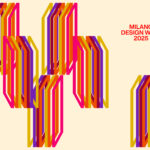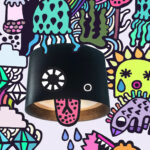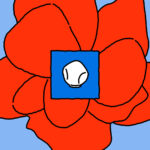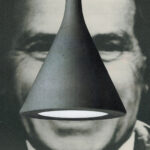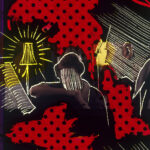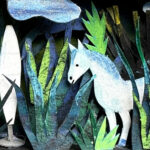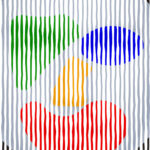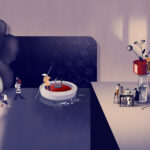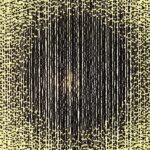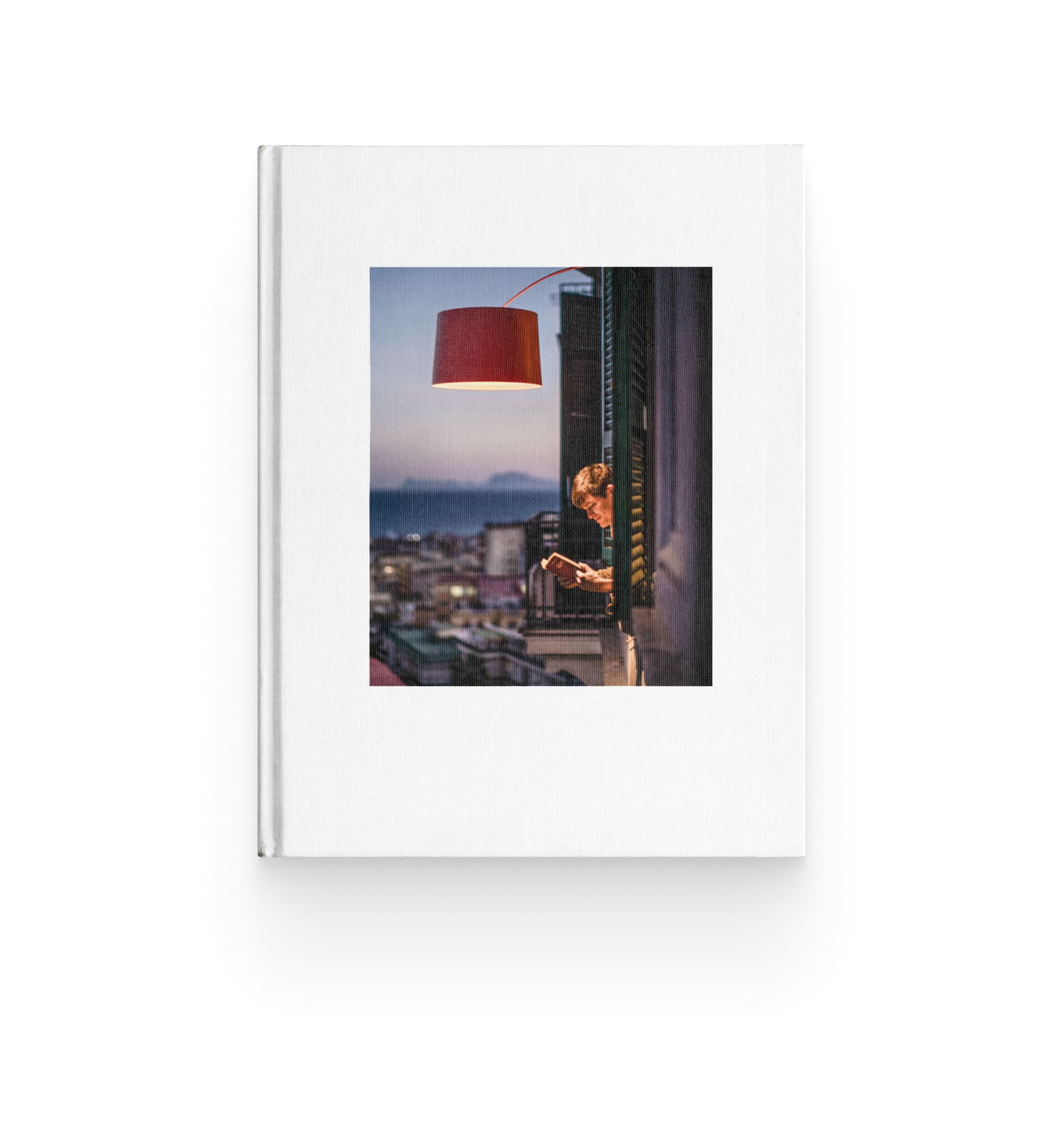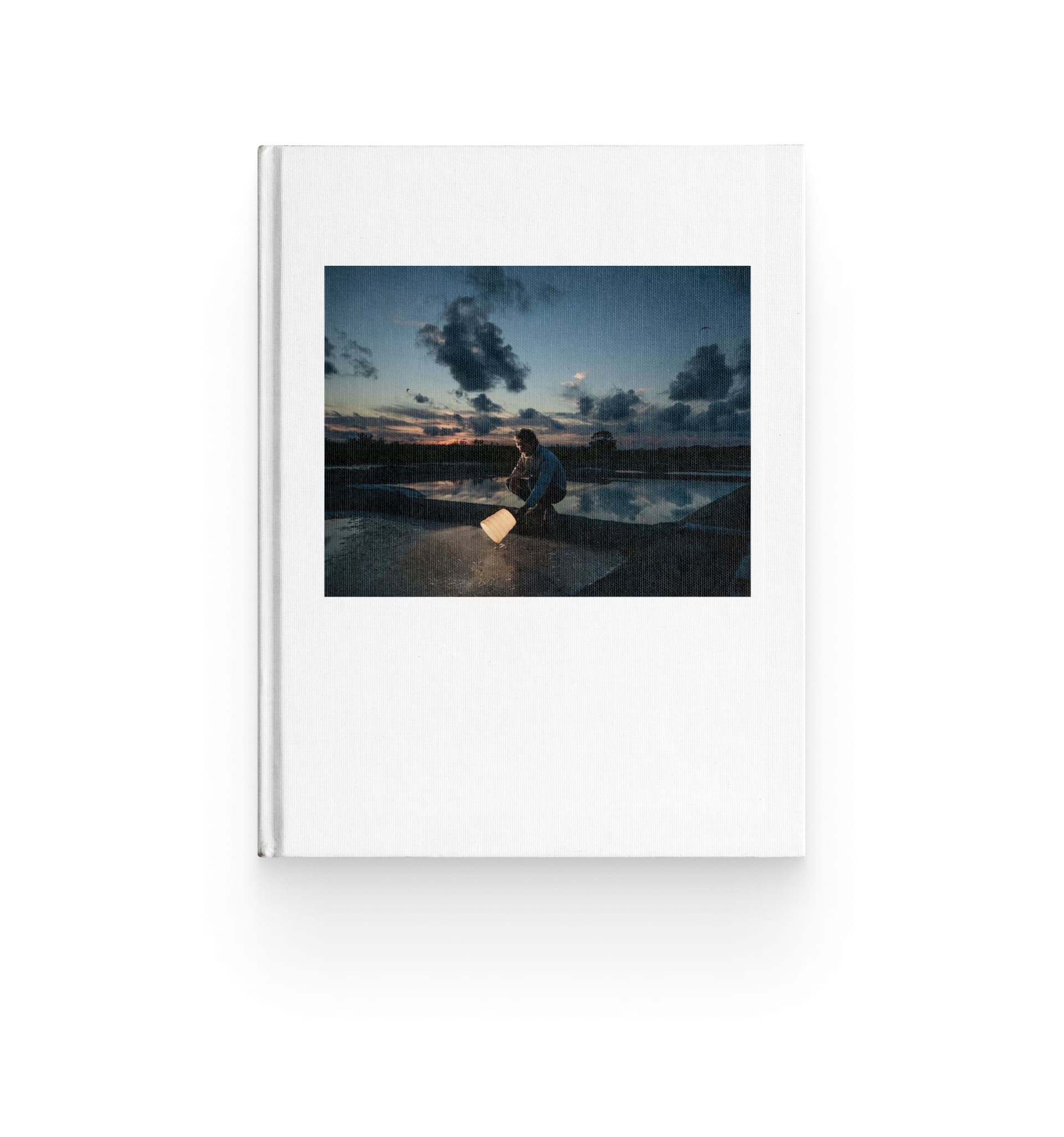Light and emotions in Allissand’s illustrations for “What’s in a lamp?”

In the new series for the project “What’s in a lamp?”, emerging illustrator Alessandra Bruni (@allissand) brings us into a realm of light and emotions. Her artwork carries a poetic and cozy feel, where Foscarini lamps create personal and intimate atmospheres while at the same time they transform the space, reveal stories, trigger insights.
Alessandra Bruni is a dreamy soul, born in ’97, dancing with creativity. Illustrator and tattoo artist, she has always had a passion for art. In the last few years, she is emerging as one of the most inspiring voices on the Italian scene, who has managed to gain the attention of important newspapers such as The New York Times, L’Espresso and Internazionale. Her passion for illustration, however, is relatively recent: it was during the pandemic period caused by Covid-19 that she started to share her illustrations on Instagram. Her works, inspired by news topics, deal with emotions and human connections. Her unique style, minimal yet highly evocative, offers an immediate and profound perspective.
In her series for the project “What’s in a lamp?”, Alessandra makes light the protagonist by creating homely scenarios that are at the same time familiar yet unexpectedly surprising. Stories told through images in which each lamp harmoniously echoes the personality of the protagonist, revealing it and triggering feelings and emotions in which one can easily identify. As if they were open windows on our everyday life, these images seem to be talking precisely about us, about who we have been or who we will become, while creating atmospheres that are almost tangible as they convey deep intimacy.
Discover the full interview with Alessandra Bruni and immerse yourself in her captivating world of light and emotions.
Can you tell us a little about yourself: did you always know you wanted to become an illustrator? When did you start drawing and how did you get to develop/evolve your style?
I didn’t really know from the beginning that I wanted to actually be an illustrator, but I have always dreamed about working in art and dedicating my life to this. I started drawing at a very young age, by the time I was three years old I already had crayons in my hands and I enjoyed doodling at the computer using Paint, which I might describe as a kind of first approach to the digital world. Throughout my school days, although I did not choose an artistic course, I practiced realistic drawing in an almost obsessive way. Life drawing was the first stage of my journey as an artist. It was like I wanted to absorb the shapes of things, faces, and bodies. As I grew up, the need to give meaning and content to the images took over, so I began to pursue conceptual illustration. My style is constantly evolving, it naturally adapts to the different stages of my work and personal experience, of course there is a component of research but still the instinctive factor is highly influential.
How did the collaboration with Foscarini come about?
The collaboration with Foscarini originated from what is probably every artist’s dream. They noticed my work in a bookstore, having read my name in the back cover of a book I illustrated. For me, there is nothing more fulfilling than realizing that my work was discovered purely by chance, genuinely, and was appreciated for what it is. It’s akin to stumbling upon a little truth in the proverbial saying “being in the right place at the right time.”
Your illustrations are undoubtedly stories, conveyed not by words but through the powerful and universal language of visual art. Could you share with us some insights on how you approach the narrative aspect of your creative process?
We are currently living in a time when individuals strive to have their voices heard, often trying to overpower one another without taking a moment to pause and reflect. I aim to swim against the current. My favorite aspect of creating is the act of listening. I make an effort to absorb as much information as possible and then transform it into visual imagery. It’s simply a matter of selecting the appropriate elements that, when combined, have the power to convey more than a multitude of words ever could.
In this collaboration with Foscarini, you have beautifully captured domestic scenes that are simultaneously familiar and surprising. These illustrations depict situations where light takes on a transformative power, almost becoming a tangible presence, and giving rise to unexpected and surreal scenarios. Can you shed more light on the inspiration behind this captivating work?
Before delving into the creation of these illustrations, I had the privilege of hearing Carlo Urbinati, the founder and president of Foscarini, share his stories and his deep passion for his work. His words resonated with me and served as a tremendous inspiration. This project allowed me to explore the concept of light and view it as a living entity.
Light, both in our daily lives and in the realm of art, has the ability to enhance and bring greater significance to various elements. In this series, I wanted to place light itself as the main protagonist. The concept of “illuminating light” deeply fascinated me, and I thoroughly enjoyed playing with it to develop this collection of illustrations. Throughout the process, I made sure to give equal importance to shadows, as they complement and enhance the overall composition.
In this series, lamps serve as the pivotal element that transforms a simple “space” into a warm and personal environment we can truly call home. They define the atmosphere, offering insights into the protagonist’s personality and evoking emotions that resonate with us. Are there any objects that have a similar effect on you, making you feel “at home” wherever you go?
As I reflect on these questions, I find myself in a uniquely special moment in my life. I’m on the verge of purchasing my first home at the age of 25. Until now, my focus has always been on constantly moving and never settling down. However, now I finally feel the yearning for a sense of “warmth” and a space to truly call my own. Over the past few years, I’ve found myself in various contexts, frequently moving from place to place. Throughout those transitions, there’s one item that has consistently accompanied me: boxes of books. Some of these books I’ve cherished since childhood, and they have become an integral part of my living environment. They help define the atmosphere and bring me a sense of serenity. Honestly, I hadn’t previously taken a moment to ponder this topic, but I’m eager to discover what other objects will come to define my home.
Which illustration(s) do you like the most in this series and why?
It is quite a challenging task to pick a single “favorite” illustration, as each image in this series is truly unique, just like the lamps that served as my inspiration. However, if I had to choose, I would probably go with the one I created for the Gregg suspension lamp. This illustration portrays a girl in a state of deep absorption while standing by a window. What makes it particularly captivating is the way the lamp’s light reflects off the sea outside, creating a fascinating paradox. By doing so, I intended to elevate the lamp to the role of the “sun” within the domestic environment. Interestingly, this illustration also symbolizes the seamless connection between the indoors and outdoors, blurring the boundaries between them. Ultimately, this metaphor is meant to emphasize the intricate interplay between our inner and outer worlds.
Your work encompasses a wide range of subjects, from current events to human connections, and from personal emotions to environmental and social issues. Among these diverse subjects, which one do you find most enjoyable to draw? In which area do you feel the most at ease?
I’m always on the lookout for new sources of inspiration for my art, but one theme that remains constant is the human figure. Almost all of my illustrations involve humans interacting with their surroundings. This is because I find the various dimensions of the human soul and psyche endlessly fascinating. Throughout history, humans have exhibited an exceptional capacity for creating both remarkable and beautiful works, as well as committing terrible and sometimes irreparable actions. Perhaps it is the complexity of our nature that intrigues me the most. At the same time, I find great comfort in delving into this broad theme, as I myself experience a range of emotions on a daily basis. Drawing not only serves as a cathartic outlet for me, but also as a means of communication with others.
What are your sources of inspiration for editorial illustration, considering that inspiration and creativity are vital in this field?
I draw inspiration from various sources. Firstly, I find inspiration in my surroundings, paying close attention to the environment in which I live. Additionally, films, works of art, and photographs serve as excellent models that inspire me to create something fresh and unique. Moreover, I actively follow and find motivation from accomplished Masters of illustration who continuously inspire me to improve. Some notable names that have influenced me include Noma Bar, Ivan Canu, Beppe Giacobbe, and Pablo Amargo.
How do you define creativity?
Creativity, to me, is an internal drive that paves the way for endless possibilities. It entails a deep-rooted need to create new connections between diverse elements. In fact, life itself owes everything to the power of creativity. When I create, I embark on a journey of exploration, growth, and above all, enjoyment. It brings me a sense of purpose, as if I am fulfilling my true purpose in the world. While this feeling may seem irrational, I wholeheartedly embrace it as it brings me immense joy and satisfaction.








